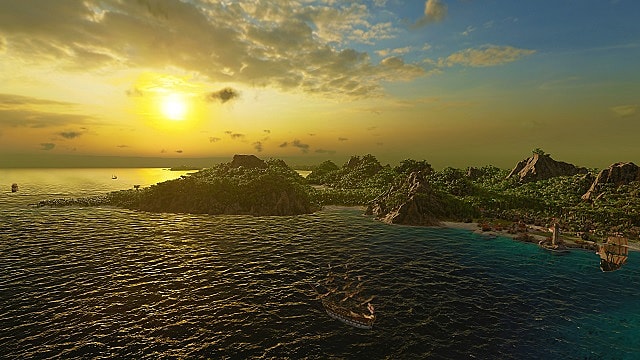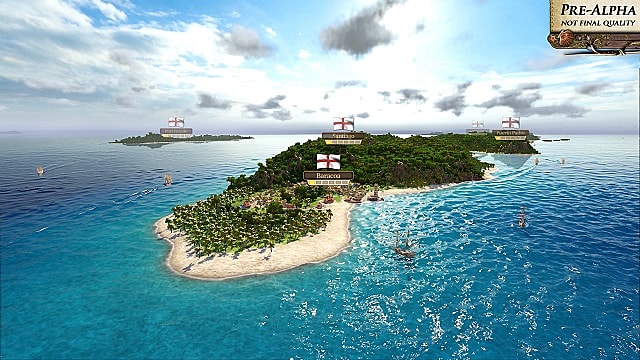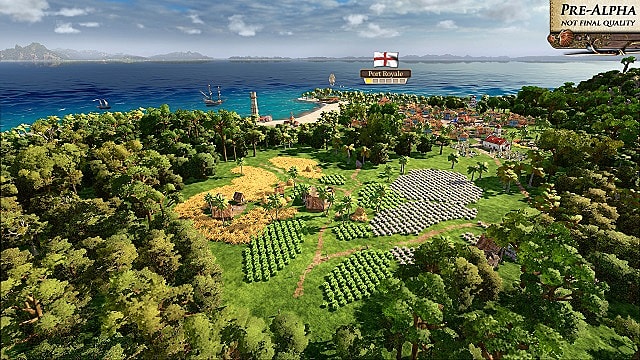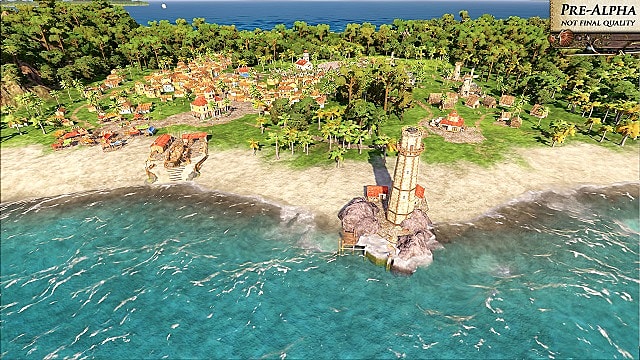You can go rogue, but it’s actually very tough to make it work, and you’ll lose a lot of the benefits you’d normally accrue otherwise. Instead, this is a strategy game about building trade routes, controlling the means of production, and occasionally locking horns with some bad buccaneers out on the high seas.
It’s also a strangely calming game. Part of that is due to the setting and speed at which things happen. There’s a very cathartic feel to setting up multiple trade routes, zooming out, and watching your various convoys set sail. You’ll rarely hit stressful, fast-paced sections; Port Royale 4’s leisurely pace puts it in a different realm from many supply management games of a similar ilk.
Keep in mind: These impressions come from an early build of the game. Port Royale 4 isn’t due out until late September. However, here’s what you can expect if you decide to set out on the high seas.
Port Royale 4 Beta Impressions: Cutthroat Strategy
Port Royale 4 is, essentially, a resource management game. You select one of the four major powers in the Caribbean (Spain, England, France, or The Netherlands) and set out to control the economy against a backdrop of pirates and buried treasure. To do this, you set up convoys of ships to sail between the various cities, searching for the best deals and manipulating supply and demand to increase your profits. There are many ways to play, but they all boil down to, “How can I make the most money?”.
You start out with just a few little ships, and you send them out to buy a few goods here and there to start increasing your coffers. Soon, you’ll start setting up automated trade routes, where you tell your ships when to buy and when to sell. You can turn pirate and attack anyone, or work within your home country’s current alliances as a privateer. You can also set up your own production centers in cities, creating your own manufacturing or agricultural empire and, ultimately, reaping the rewards.
One of the best aspects of Port Royale 4 is that, for as complex as it all is, it isn’t that hard to get the basics running and start humming along. You won’t become some sort of pirate kingpin without putting in the work, but it isn’t hard to start turning a small profit and branching out from there.
It’s refreshing to play this style of game and not get punished if you don’t “figure it out” right away; some players will be perfectly content to set their routes up and watch them work.
High Seas, High Stakes
There is plenty more to do in Port Royale 4 than just setting up your ships and watching them move. While you’re trying to turn your profits for the motherland, all those other motherlands are also maneuvering against you. Cities build up on their own, crafting new means of production and growing (or shrinking) as events happen around them. You (and, to an extent, AI-controlled players) can block supplies from getting into certain towns, cutting off their growth and making them worthless.
You can drive up demand for vegetables in a city, then build a bunch of farms in that city and sell them at a ridiculous price. Even better, you could build those farms in a neighboring city, so they have to pay even more to ship them. Even better, you can then sabotage the vegetable farms controlled by England, making it so your vegetables are the only vegetables around. It’s some serious mob boss manipulation.
Ready the Cannons
Besides all the economic aspects to control, there is plenty of exploration to be done. As you set sail all around the Caribbean, you’ll encounter little points of interest. Some might be as simple as a sailor who wants to join your crew, others might give you part of a treasure map and still more might give you some bonus objective. These all fall under the same general umbrellas, but there are enough slight differences to keep them from getting stale.
There are also hostile ships to contend with: If your home nation is at war with another, you and they have every right to attack one another. Pirates also roam the waters, and you’re always free to light the cannons if you come across one of these deviants.
Unfortunately, combat is the area that tends to be the muddiest part of Port Royale 4. Whereas the rest of the game is all happening in real-time, ship battles shift to a turn-based mode using hexes for movement and an alternating initiative. Turn-based works well with some types of battles, but you lose the feel of commanding a fleet when they suddenly start taking turns.
Ships are supposed to be cumbersome beasts. You battle for maneuverability, especially while controlling a multi-masted beast. By setting up battles as turn-based affairs, you lose the sense of seamanship that the rest of the game really puts across. Ship battles often feel unwieldy in video games, but Port Royale 4 doing the opposite helps you realize that they absolutely should feel unwieldy.
Luckily, combat in Port Royale 4 is not a central feature. It is going to happen occasionally, but you can mostly avoid it if it isn’t your cup of tea.
A New Horizon
Overall, if you’re looking for a strategy-management game that allows you to pick how hardcore you want things to get, Port Royale 4 seems like it’s shaping up nicely. It isn’t the worst thing in the world to watch dozens of little ships go about their business, sailing around the Caribbean and trading with towns. You can also go full kingpin, cutting off supply lines and starving cities out until they are forced to do business with you and you alone.
Keep an eye on this one: Port Royale 4 has some small issues at the moment, but it could turn into a hidden gem by the time it releases in September.




